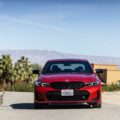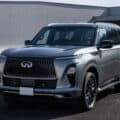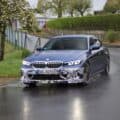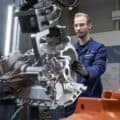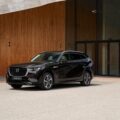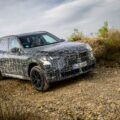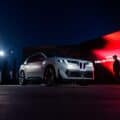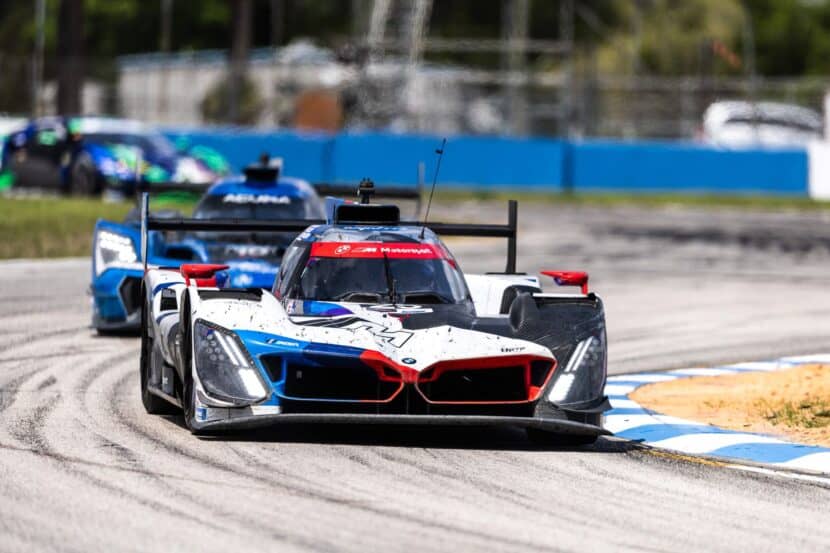BMW i’s development of the i3 and i8 put it five years ahead of its EV competition, in terms of light-weighting, style, and performance. Moving forward, battery technology may need another five years before it can support the sub-brand’s performance, range, and weight targets for its next-generation BEV. If BMW simply bides its time until then, its technological advantage will have been squandered.
There’s no doubt that BMW will continue to update the i3 and i8 to eliminate owner’s gripes, improve reliability, and refine manufacturing processes. All good and necessary. But that’s not going to take them to the next level. That’s not going to attract new awards. That’s not going to wow their EV customers, not in five years.
But why is that so important for BMW?
First, fuel-efficiency and emissions rules motivated BMW to add the i sub-brand to improve fleet averages. Build the niche BEV so they can continue selling their heavier, premium ICE performance sedans. For that to work, however, with every passing year BMW will need more consumers to want to buy their EVs. The critical question is this: is BMW building zero-emissions EVs today because it has to, or because it wants to? A business requirement, or real enthusiasm?
The second reason, perhaps less obvious and more insidious, is the fact that besides being quiet, smooth and roomy, electric cars can now blow away fossil fuel performance cars. Will BMW be the go-to car for a new generation of performance junkies ten years from now? Will BMW still build “the ultimate driving machine,” or will it just be the nostalgic choice for traditionalists?
The times are changing.
To stay competitive, BMW i needs to continue to push the EV performance envelope, not five years from now, but now. They need to continue to innovate, but because battery technology will not yet support a next-generation production car, the focus will have to be on test and concept BEVs. This sort of aggressive, highly-motivated BEV development program absolutely requires strong support from BMW’s executive suite.
Would a BMW i racing program do this?
Racing provides structure, motivation, a schedule, and a goal—to win—aside from the pure technology development aspect. Winning provides instant gratification, prestige, and pride; losing inspires a renewed impetus to do better. Winning EV races would also attract performance EV customers.
Racing provides a ruler; the competition will let you know when your latest effort doesn’t measure up. Everyone tries something different, but new ideas are not all equal. Even if your idea brings a significant improvement, you don’t want to discover that the competition’s idea works 50% better on the day your new model goes into production.
Racing promotes creativity. Refining the status quo does not win races so much, but it might be the safe approach for a typical road car development program. For example, rear-wheel regenerative braking (such as on the i3) works fine for mild-to-moderate braking with good road conditions, but not under more demanding requirements. Does BMW i think the system they have now is good enough to carry into the future?
The current Formula E race cars have the same rear-wheel magnetic brakes in combination with four-wheel friction brakes as the i3, and those cars often experience brake lock-ups under race conditions, with loss of control, even with world-class race car drivers at the wheel.
This issue is undoubtedly something that will be examined as e-racers look for creative ways to improve their cars. This is a complex problem possibly requiring a total rethink of the whole car design. Can you make four-wheel regenerative braking systems effective enough for those magnetic brakes to become the car’s primary brakes? How powerful would the drive motor/generators need to be to enable that? Then how much could you minimize the size and weight of the friction brakes, which might only have to contribute the last ten percent of the total braking force (instead of being designed for 100%)? Could they be mounted inboard to minimize unsprung weight? How much current would the motor/generator output at high speed at maximum magnetic braking (just short of wheel lockup)? Could the power electronics and the battery handle that burst of charging current? Could a high power capacitor module (ultra-caps) absorb those short bursts of current if the battery could not safely do so, and then quickly release that electrical power back to the motors to boost the car’s acceleration out of the turn?
Would a developmental effort like that even be considered by BMW, if the company didn’t aspire to anything more than a very good zero-emissions commuter car?
Electric vehicles in many respects offer a superior driving experience compared to ICE cars. Further BEV technological improvements using conventional car benchmarks may not be immediately obvious (other than better batteries). But if you’re racing your electric car against someone’s else’s EV, you’re more likely to look for innovative gains.
Is a racing program necessary to develop an advanced zero-emissions (BEV) performance car? Obviously not—different strokes for different auto companies. But BMW has a well-developed racing program for its ICE cars, so that corporate culture already exists.
The competition is out there.
Racing today and tomorrow
ICE racing is big business today, steeped in tradition and its own precepts. Loud noise is obviously part of it. To the team owners, drivers, pit crews, and the fans, it’s an old familiar friend. But it’s changing, because the automotive industry is changing.
The fact is, ICE racing has likely passed its heyday. Electric cars are getting faster and lighter, and are quickly becoming more relevant to an environmentally-conscious society. That’s not being lost on a growing segment of the racing community.
Look at the Pike’s Peak International Hill Climb (the second oldest U.S. car race after the Indy 500). It’s a 20-kilometer course with 156 turns. Not too long ago, electric vehicles were a novelty there, mostly private “hobby” efforts that nobody thought could compete on equal terms with the high-powered ICE entries. But in 2013, an electric motorcycle beat all the gas-powered bikes. Then last summer, after years of development, the electric cars started shattering conventional wisdom. Two Mitsubishi AWD MiEV Evolution IIIs finished 2nd and 3rd overall, coming within a few seconds of the fastest unlimited class ICE racer, and beating, among others, a 700-HP specially-prepared Porsche GT3 Cup Turbo—by 50 seconds!
Who won the Electric Production class in 2014? A Honda Fit EV. No i3 was entered.
This year’s Pike’s Peak Hill Climb will be run on June 28, and a one-megawatt electric race car will be gunning to take top honors. That all-wheel-drive EV puts out almost 1400 horsepower and 1600 pound-feet of torque, has a 50 kWh battery, yet weighs only 2640 pounds. Fast?
While Formula One is by many accounts in decline, the Formula E series will conclude its first very successful season on June 28 with a double-header in London; its other nine races are held all over the world in city centers (including Buenos Aires, Beijing, Miami, Monaco, Berlin, Moscow, etc.). There may be more venues next year, including Paris, and Switzerland the following year, where motorsport racing has been banned for more than 50 years (the Swiss government just recently made an exception for environmentally-friendly Formula E). Besides drawing large crowds at the events, and substantial numbers of online and television viewers, the series has attracted a full grid of top-tier drivers, many ex-Formula One, and high-profile team owners (Richard Branson, Leonardo DiCaprio, Michael Andretti, Jarno Trulli, to name a few). The teams are getting global exposure, and pulling in a growing fan base new to car racing.
During this first year, all ten Formula E teams were given identical Spark-Renault SRT_01E cars, using components from McLaren, Williams, and others. In its current form, this e-racer can go from 0 to 100 kph in three seconds flat. Formula E’s CEO, Alejandro Agag, predicts they will be significantly faster as batteries improve and become lighter. For the second season, teams can provide their own drivetrain components, and beginning the third year, their own batteries. Eight manufacturers have been approved for this work, and everyone is enthusiastic about the advances in EV performance this competition will bring.
BMW i is a sponsor of Formula E, providing i3s and i8s for use as safety and medical cars, and others for spectators to examine, but has yet to enter the fray as a racing participant. Why not?
BMW’s future competition
Tesla and BMW have been in the forefront of those companies pushing EV technology. Certainly Nissan and Renault have been carrying the flag for the EV movement, but not so much on the performance end, and therefore no direct competition to BMW.
The dark horse is Mercedes, builder of the respectable but unremarkable B-Class conversion EV, using a Tesla drivetrain and batteries. That would seem to make Mercedes a Tesla customer, not a company that could pose a threat to BMW in the electric performance segment. However, when it comes to performance EVs, Mercedes really has “got game,” even if it didn’t get there by racing.
The proof is spelled SLS AMG Electric. You can buy one if you have enough green, and drive it on the street, but it’s designed like a race car with a futuristic electric drivetrain. Why did Mercedes build it? Certainly not to make money. Mercedes obviously wanted to be prepared for the future of premium performance cars. So they built a low-volume technology demonstrator.
It has 751 horsepower, substantially more than AMG’s ICE version of the SLS. The electric version’s power is produced by four melon-sized motors (one driving each wheel, each producing about the same torque as the motor powering the i3). The computer continuously calculates and distributes the amount of power optimally required for each wheel, to enhance turning and traction.

Jeremy Clarkson tested one. He had both the electric drive and the conventionally-powered SLS AMG Black Series on hand. He was mightily impressed by the gasoline version. Then he drove the SLS Electric.
It was faster. He said the four-wheel torque vectoring seemed to pull the car into the turns. Of the EV, he said, “This doesn’t feel like anything I’ve driven before . . . it feels like a thoroughbred . . . it feels brilliant!”
Electric cars really are fundamentally different than their ICE brethren.
In the not-to-distant future, Mercedes will certainly be transferring an updated version of its SLS Electric technology into a luxury performance car. BMW’s future competition.
And then there’s Tesla, BMW’s future competition you can buy today. Tesla is a new, small company, with only one car model on sale. And they have no competition in their segment. Not a good fit for a developmental racing program, but the company nevertheless has a singular focus on electric performance cars—a racing mindset.
The Tesla Model S P85D outputs 687 lb-ft of torque from a standstill, good for a 0-to-60 mph time of 3.1 seconds (certainly faster than an M5). What’s it going to do when battery energy density has doubled (it will), and the car weighs 800 pounds less? What do you call the next level of performance after “insane”?
Tesla only builds electric performance cars, and is very enthusiastic about them. It eschews dealer franchises staffed by people who are more focused on selling familiar ICE cars. Why? Because Tesla believes electric cars are the future, and doesn’t want anyone dismissing them as a sideshow. Is there a parallel with BMW (with its focus on ICE cars)?
BMW could easily build a pure electric i8 test mule, leaving an i3 motor in front and replacing the 3-cylinder engine with two i3 motors in the rear. That would give them a very respectable 550 pound-feet of torque (750 newton-meters), and allow them to experiment with four-wheel magnetic braking and rear-wheel torque vectoring. The platform developed from such a program could be used for an advanced electric performance sedan (adding a new CFRP passenger module) that would compete favorably with Tesla. And obviously, the platform would be ready-made for an exciting all-electric i8 variant.
BMW’s future
BMW is now making good money building cars incrementally different, but fundamentally the same as what it has built in the past, to satisfy its conservative and loyal core customer base. At the same time, the company is introducing ICE models in different segments to bring in new customers.
Its response to the need for electrification has been to launch the i3 EV and i8 hybrid, and to add plug-in hybrid versions of existing ICE models. This is perhaps the expected measured response by a large business-oriented corporation to a changing technological and regulatory climate.
But is it enough? Nimble enough? Farsighted enough? Bold enough? Will BMW’s competition make its future cars seem dated? Does BMW i need to go racing?
Only time will tell.








